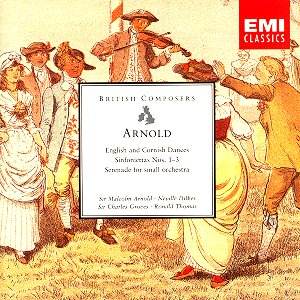 Composer: Johannes Brahms
Composer: Johannes Brahms
Works: Academic Festival Overture, Op. 80; Symphony No. 1 in C minor, Op. 68 (3rd Movement only); Symphony No. 3 in F major, Op. 90; Tragic Overture, Op. 81
Performers: Concertgebouw Orchestra of Amsterdam, conducted by Willem Mengelberg
Recording: Columbia Records (30 May 1930, 31 May 1930, 10 May 1931, 17 April 1942)
Label: NAXOS HISTORICAL 8.110164
Johannes Brahms, a towering figure of the Romantic era, occupies a unique position in the pantheon of Western music as a composer who synthesized the structural rigor of classical forms with the emotional depth of his contemporaries. The present recording, featuring the venerable Concertgebouw Orchestra under the baton of Willem Mengelberg, encapsulates the essence of Brahms through key orchestral works, illuminating his orchestral palette with a historical lens that rewards both the casual listener and the scholarly enthusiast.
Mengelberg’s interpretation of the Academic Festival Overture opens with a measured yet expectant tread, capturing its inherently complex character. While Ian Julier describes this reading as “exhilarating,” it resonates more as a serious exploration of Brahms’s intentions. One notes the overture’s thematic material, from the initial furtive motif to the jubilant culmination, is handled with an acute sense of balance. The dynamics are meticulously shaped, with Mengelberg allowing the orchestral textures to breathe, particularly evident in the interplay between strings and winds. This nuanced approach lends the performance a gravitas that can sometimes be overshadowed by its more festive surface.
The Symphony No. 3’s first movement is marked by an urgency that does not compromise clarity. Mengelberg’s ability to navigate the symphony’s intricate counterpoint is commendable; each line emerges distinctly, allowing Brahms’s conversational style to flourish. The conductor’s deft manipulation of tempo, particularly in the transitions, showcases a deep understanding of the work’s emotional architecture. Here, the strings exhibit an aristocratic poise, while the woodwinds display their characteristic warmth, notably in the lyrical passages that punctuate the movement. The Andante flows with a natural ease, marked by a serene lyricism that is captivating. This is complemented by the poco allegretto, which indeed “moves fluently but is full of yearning,” as noted by Julier, an observation that underscores the conductor’s interpretative choices.
Mengelberg’s account of the Tragic Overture stands out as a particularly fervent interpretation, disallowing any notion of Brahms as merely a comfortable or bourgeois composer. The stark contrasts between the light and dark elements of the score are vividly realized, with the orchestra delivering a visceral performance that resonates with emotional intensity. The brass and percussion sections are particularly assertive, lending an unsettling vigor to the climaxes, which aligns with Julier’s assessment of this performance as one that delves into the work’s darker recesses. The technical execution is exemplary; the ensemble’s precision and cohesion reflect the longstanding rapport that Mengelberg cultivated with his players over the years.
The remastering by Ward Marston brings a welcome clarity to these historic recordings, although the inherent surface noise of the era is occasionally perceptible, particularly in the Telefunken recordings. Yet, this should not detract from the overall listening experience; instead, it serves as a reminder of the legacy of these performances. The Concertgebouw’s sound, rich and resonant, captures the essence of the orchestral colors Brahms so masterfully employed.
A striking feature of this disc is the inclusion of the 3rd movement from the First Symphony. Even in this brief excerpt, one can appreciate the rhythmic vitality and clarity of expression that Mengelberg elicits from the orchestra, further illustrating the conductor’s adept handling of Brahms’s orchestral language. This recording stands as a testament to the enduring power of these compositions, skillfully bridging the gap between historical context and contemporary appreciation.
This collection is a remarkable offering, rejuvenating classic performances that, despite their age, continue to resonate with vibrancy and insight. The interpretative depth, combined with the technical prowess of the Concertgebouw, makes this a must-have for devotees of Brahms and connoisseurs of historical recordings alike. The artistry captured here not only enriches our understanding of Brahms but also affirms the lasting impact of Mengelberg’s conducting. More such releases would indeed be a welcome addition to the canon.



